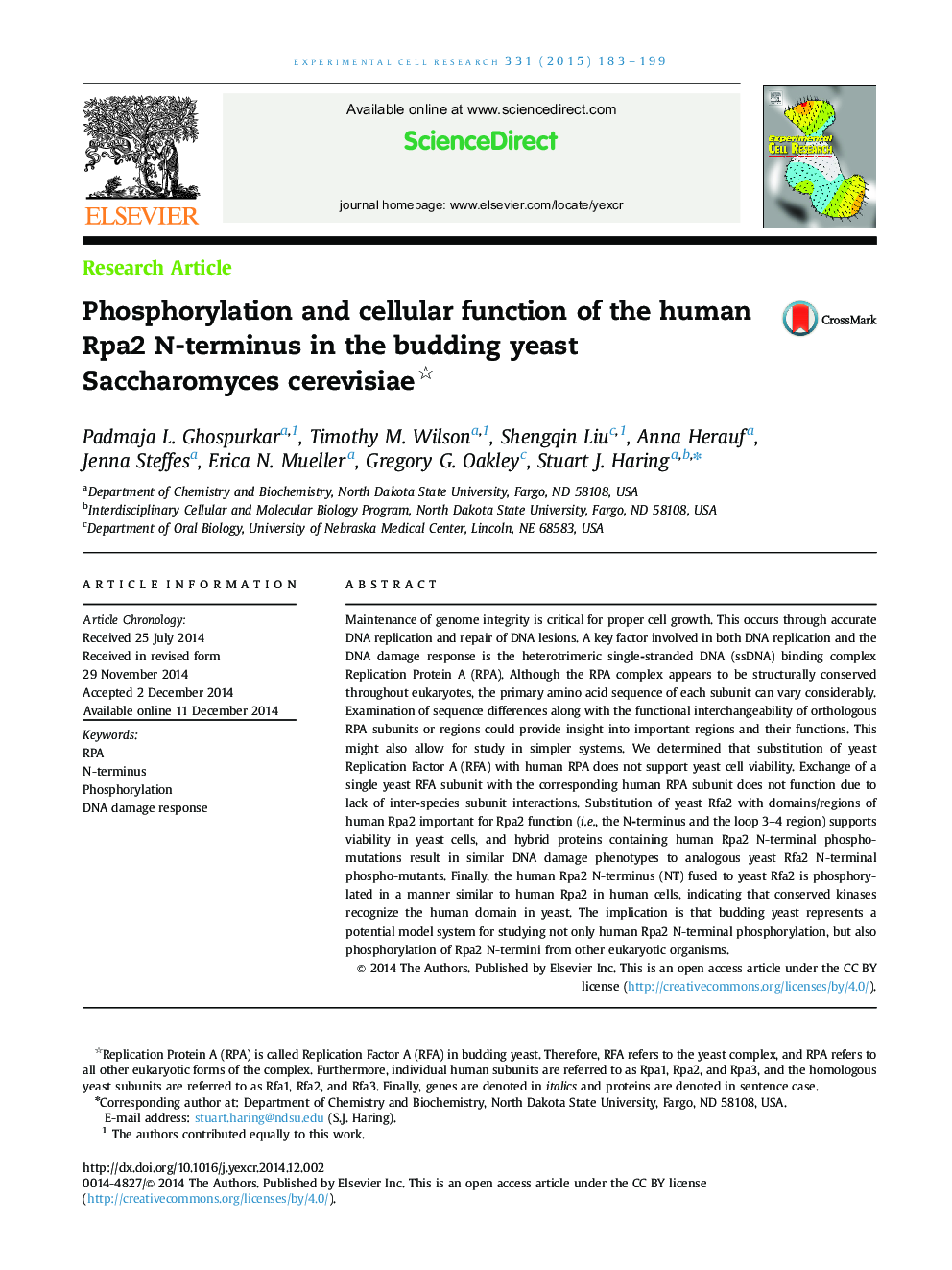| Article ID | Journal | Published Year | Pages | File Type |
|---|---|---|---|---|
| 10903942 | Experimental Cell Research | 2015 | 17 Pages |
Abstract
Maintenance of genome integrity is critical for proper cell growth. This occurs through accurate DNA replication and repair of DNA lesions. A key factor involved in both DNA replication and the DNA damage response is the heterotrimeric single-stranded DNA (ssDNA) binding complex Replication Protein A (RPA). Although the RPA complex appears to be structurally conserved throughout eukaryotes, the primary amino acid sequence of each subunit can vary considerably. Examination of sequence differences along with the functional interchangeability of orthologous RPA subunits or regions could provide insight into important regions and their functions. This might also allow for study in simpler systems. We determined that substitution of yeast Replication Factor A (RFA) with human RPA does not support yeast cell viability. Exchange of a single yeast RFA subunit with the corresponding human RPA subunit does not function due to lack of inter-species subunit interactions. Substitution of yeast Rfa2 with domains/regions of human Rpa2 important for Rpa2 function (i.e., the N-terminus and the loop 3-4 region) supports viability in yeast cells, and hybrid proteins containing human Rpa2 N-terminal phospho-mutations result in similar DNA damage phenotypes to analogous yeast Rfa2 N-terminal phospho-mutants. Finally, the human Rpa2 N-terminus (NT) fused to yeast Rfa2 is phosphorylated in a manner similar to human Rpa2 in human cells, indicating that conserved kinases recognize the human domain in yeast. The implication is that budding yeast represents a potential model system for studying not only human Rpa2 N-terminal phosphorylation, but also phosphorylation of Rpa2 N-termini from other eukaryotic organisms.
Related Topics
Life Sciences
Biochemistry, Genetics and Molecular Biology
Cancer Research
Authors
Padmaja L. Ghospurkar, Timothy M. Wilson, Shengqin Liu, Anna Herauf, Jenna Steffes, Erica N. Mueller, Gregory G. Oakley, Stuart J. Haring,
